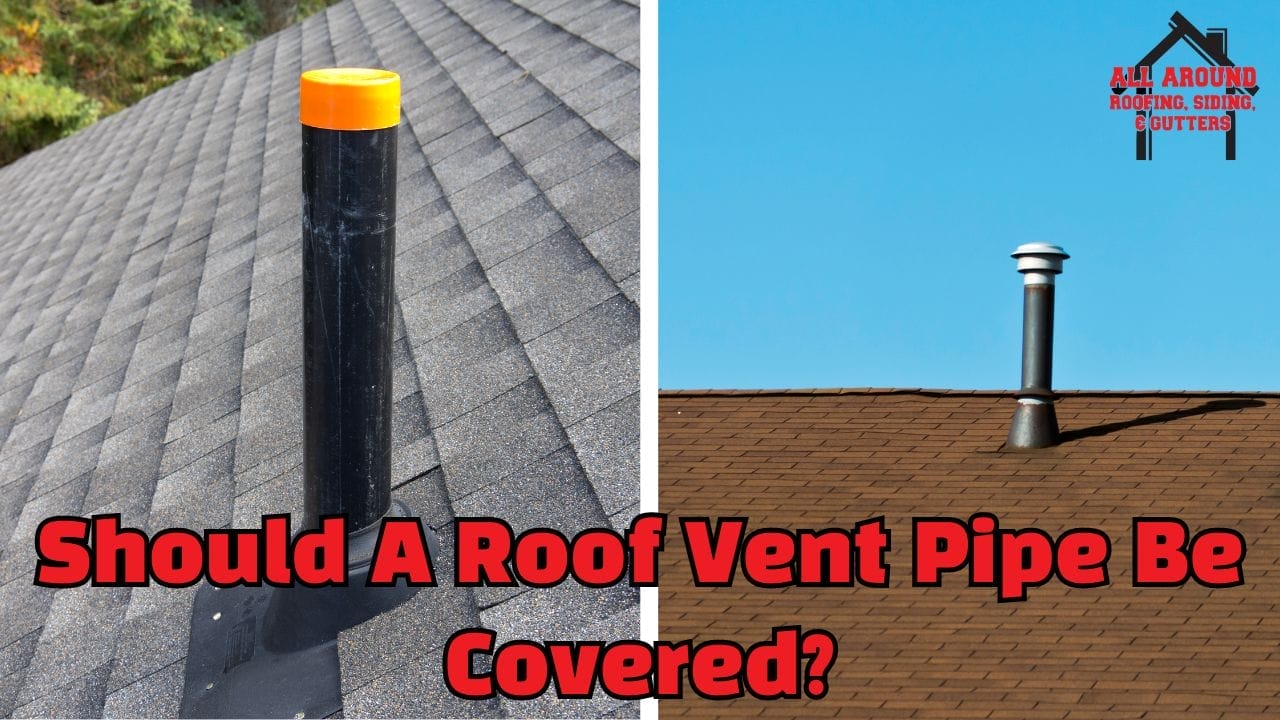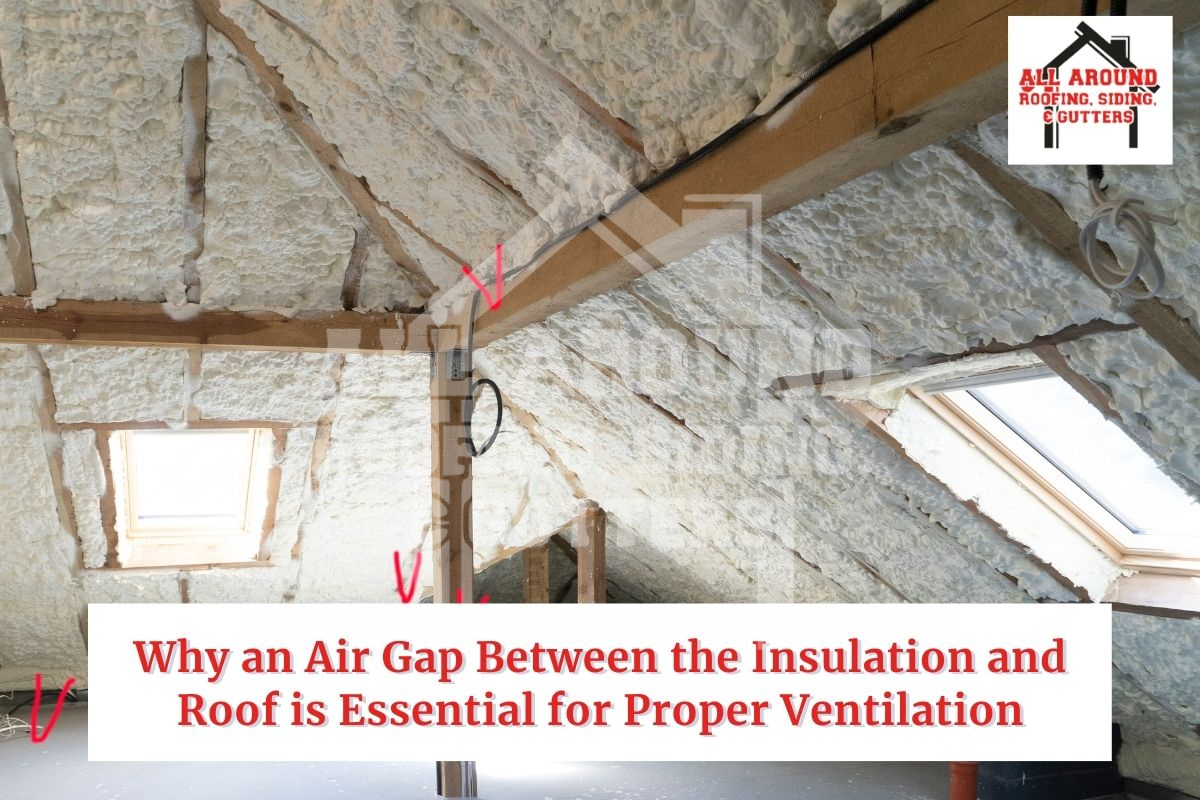Many homeowners neglect the state of their roofs until an issue occurs. While it’s not as obvious as other forms of damage, heat damage can cause severe damage to asphalt shingles, requiring expensive repairs. In this blog post, we’ll detail the type of damage that excessive heat can cause to your home and how to handle it in order to prevent future problems from occurring.
How Heat Causes Roof Shingle Damage
When you enter the attic of your home, you’ll most likely notice the way that the temperature increases. This is due to the natural way heat rises in a home. However, excessive heat can lead to numerous problems that may require repairs or replacement.
#1. Curling Shingles
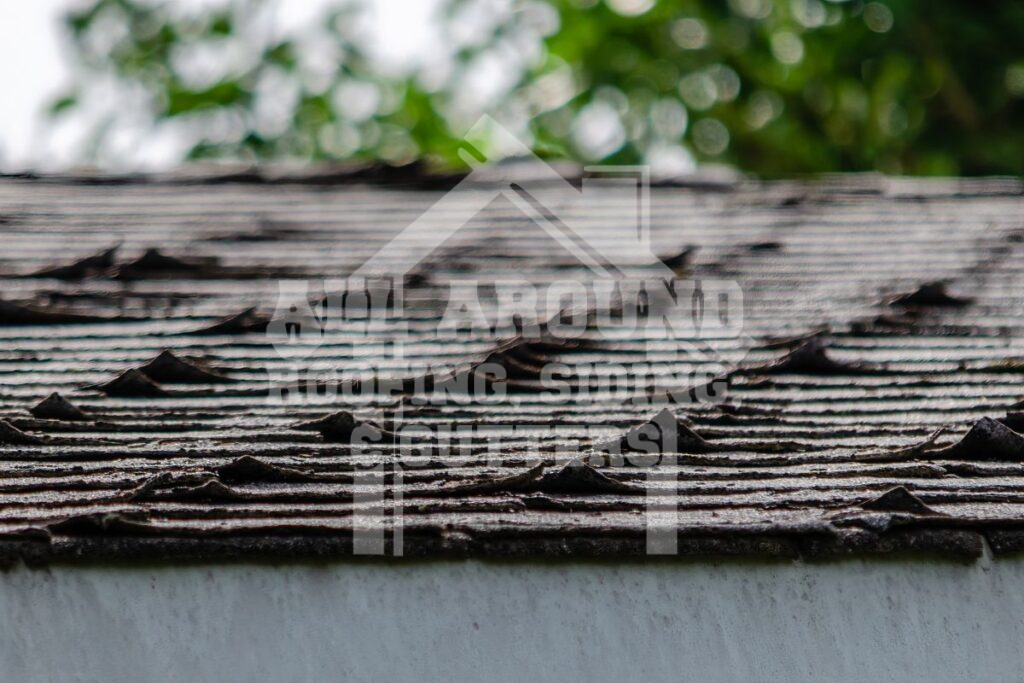
Constant changes in temperature such as excessive heating and cooling cause shingles to expand and contract. This constant change can cause the edges of shingles to curl up or underneath the shingle. In fact, shingles on the south side of the roof, that tend to get the most sun, are especially prone to curling. Curled shingles don’t lie flat, creating gaps where water can get in, causing leaks and damage to your home. Over time, this can lead to expensive repairs or even a full roof replacement.
#2. Discoloration And Fading

Constant exposure to UV rays can make shingles fade in color. Heat speeds up the breakdown of the granules that protect the shingles, and when these granules wear away the shingles lose their color and their ability to reflect sunlight. This makes your attic hotter and increases energy costs. Faded shingles are also more likely to be damaged by rain, snow, or wind.
#3. Cracks And Brittleness
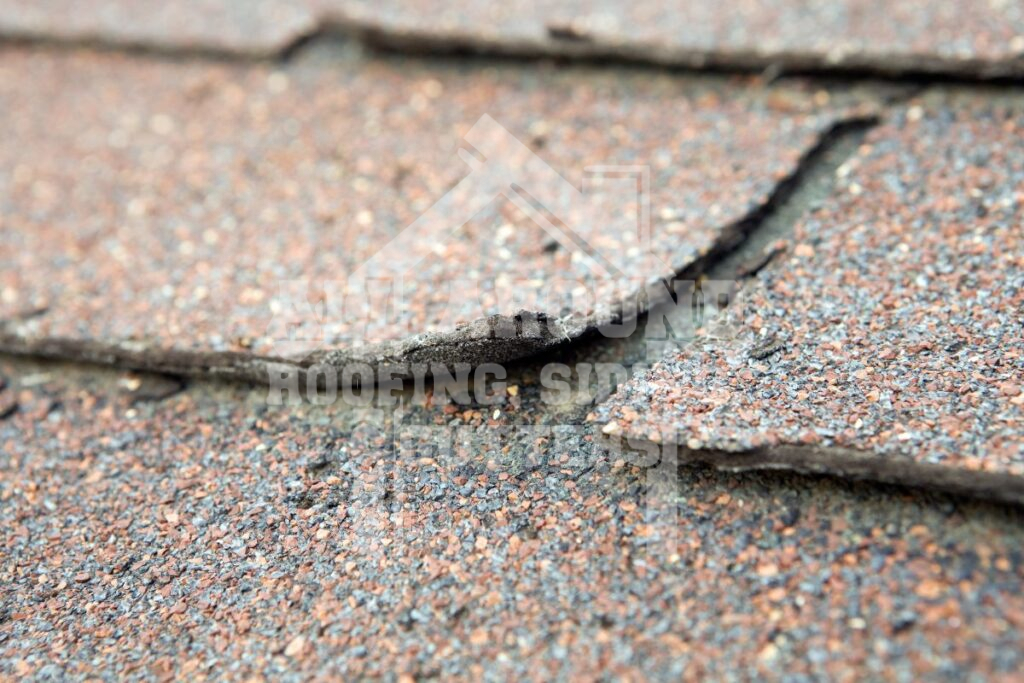
Heat can dry out shingles, making them stiff and brittle. Brittle shingles are more likely to crack, especially during bad weather, or if they’re hit by debris. Cracks allow moisture to leak into the roof, causing significant damage over time. These cracked shingles weaken the roof, making it more vulnerable to wind and hail damage. Luckily, regular inspections can help you spot and fix brittle shingles early in order to prevent damage.
#4. Shrinking And Loosening Nails
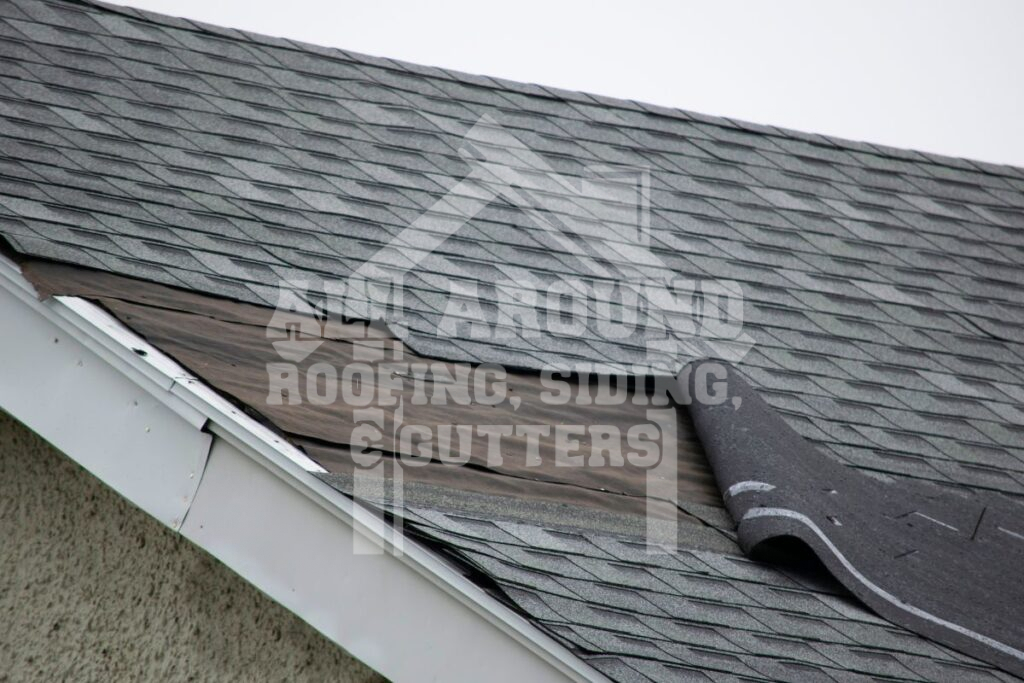
Heat can cause shingles to shrink, affecting how they fit and causes the nails to loosen in place. When nails come loose, shingles might lift or blow off during strong winds, exposing the roof to the elements. Loose nails can also create gaps that let water in, leading to leaks and damage.
#5. Blisters
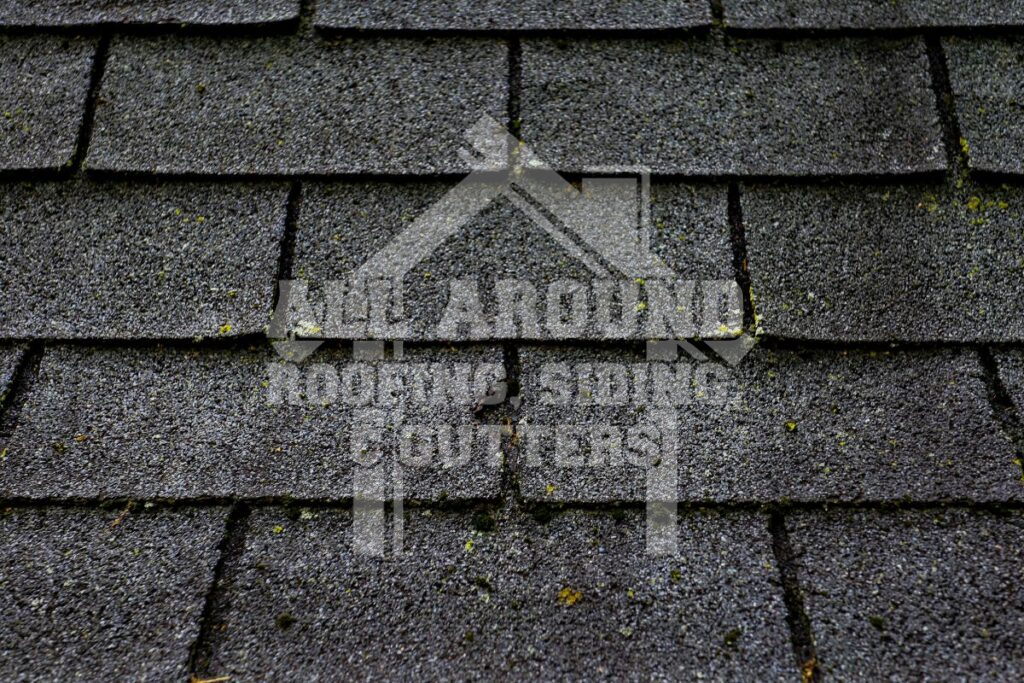
Blisters form when moisture trapped inside shingles expands due to heat. This moisture might be caused by humidity or water vapor inside your home due to lack of ventilation. When the temperature increases, the moisture bubbles on the shingle’s surface. Blisters weaken shingles and make them more likely to crack and peel. If blisters burst, they expose the shingles to the elements, increasing the risk of leaks and damage.
What Causes A Roof To Overheat?
Now that you know the forms of damage that can occur when your roof is overheated, here are some of the things that cause the roof to overheat in the first place:
1. Lack of Proper Ventilation
When a roof doesn’t have enough ventilation through soffit, ridge, or gable vents, the attic can become very hot. This is a big problem for homes in warmer climates, as without proper airflow, hot air pushes up against the roof deck, causing shingle damage such as curling or blisters.
2. Improper Insulation
Insufficient insulation, particularly in the attic, allows heat to transfer easily between the roofing materials and interior of the roof. To prevent this, insulation should be installed with the appropriate R-value for the climate, effectively keeping the heat out.
3. Heat Absorbed by Dark-Colored Shingles
Dark-colored shingles absorb more heat than lighter ones. While they might seem like a great option for a quality appearance, this leads to heat transfer and significant damage to the shingles over time.
How To Protect Your Shingles From Heat Damage
1. Stay Ahead With Reular Roof Inspections and Maintenance
Regular maintenance prevents heat damage and keeps your roof in good condition. Key tasks include:
- Ensuring proper ventilation
- Inspecting for wear and tear
- Repairing issues promptly
By staying proactive and doing frequent inspections, you minimize the risk of damage and ensure your roof remains effective and durable.
2. Install Vapor Barriers
Vapor barriers reduce the amount of moisture in the attic, preventing mold and wood rot, and are especially useful in humid climates.
3. Apply Periodic Acrylic Coatings
Acrylic coatings protect your roof from heat and weather damage by forming a flexible, durable layer. Regular application maintains your roof’s integrity and extends its lifespan.
4. Choose Lighter-Colored Shingles
Lighter-colored shingles reflect more sunlight than darker ones, reducing heat buildup on your roof. This helps keep your home cooler during hot months, improves comfort, and potentially lowers energy bills. Many manufacturers also offer energy-efficient, or solar shingles to reflect more sunlight, improving your roof’s performance.
5. Improve Roof Ventilation
Install enough intake and exhaust vents to improve or create a balanced airflow in the attic. This helps regulate temperature, reduces moisture buildup, and extends the lifespan of roofing materials while improving energy efficiency.
6. Add Insulation
Add insulation to your roof to block external heat and stabilize indoor temperatures. Effective insulation like fiberglass or spray foam reduces cooling costs and prolongs roof life.
Are You Dealing With Shingle Damage Caused By Heat? We Have Got You Covered!
Addressing roofing issues such as inadequate ventilation is key to preventing shingle damage and extending your roof’s lifespan. By recognizing the signs of heat damage, understanding what causes it to occur, and taking preventive steps, you can protect your investment. Don’t wait, act now to safeguard your roof from heat damage and keep your home comfortable.
For expert solutions on how to handle shingle damage caused by hot roofs, choose All Around Roofing, Siding & Gutters. Our skilled team provides the best shingle installation and repair to protect your roof from heat damage. Call us today at (937) 902-2839 to learn more about how we can help you.



